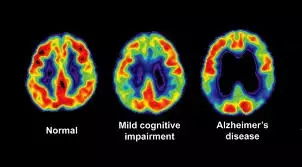- Home
- Medical news & Guidelines
- Anesthesiology
- Cardiology and CTVS
- Critical Care
- Dentistry
- Dermatology
- Diabetes and Endocrinology
- ENT
- Gastroenterology
- Medicine
- Nephrology
- Neurology
- Obstretics-Gynaecology
- Oncology
- Ophthalmology
- Orthopaedics
- Pediatrics-Neonatology
- Psychiatry
- Pulmonology
- Radiology
- Surgery
- Urology
- Laboratory Medicine
- Diet
- Nursing
- Paramedical
- Physiotherapy
- Health news
- Fact Check
- Bone Health Fact Check
- Brain Health Fact Check
- Cancer Related Fact Check
- Child Care Fact Check
- Dental and oral health fact check
- Diabetes and metabolic health fact check
- Diet and Nutrition Fact Check
- Eye and ENT Care Fact Check
- Fitness fact check
- Gut health fact check
- Heart health fact check
- Kidney health fact check
- Medical education fact check
- Men's health fact check
- Respiratory fact check
- Skin and hair care fact check
- Vaccine and Immunization fact check
- Women's health fact check
- AYUSH
- State News
- Andaman and Nicobar Islands
- Andhra Pradesh
- Arunachal Pradesh
- Assam
- Bihar
- Chandigarh
- Chattisgarh
- Dadra and Nagar Haveli
- Daman and Diu
- Delhi
- Goa
- Gujarat
- Haryana
- Himachal Pradesh
- Jammu & Kashmir
- Jharkhand
- Karnataka
- Kerala
- Ladakh
- Lakshadweep
- Madhya Pradesh
- Maharashtra
- Manipur
- Meghalaya
- Mizoram
- Nagaland
- Odisha
- Puducherry
- Punjab
- Rajasthan
- Sikkim
- Tamil Nadu
- Telangana
- Tripura
- Uttar Pradesh
- Uttrakhand
- West Bengal
- Medical Education
- Industry
Tau PET Positivity Linked to Higher Risk of Alzheimer's Progression: JAMA

Researchers have found in a large study that among cognitively unimpaired individuals there was a notable number of positive tau PET scans. When combined with Aβ PET positivity, tau PET positivity was strongly associated with increased risk of clinical progression in both preclinical and symptomatic stages of Alzheimer’s disease (AD). The study highlights tau PET’s potential as a valuable biomarker for staging Alzheimer's disease pathology.
Tau positron emission tomography (PET) allows in vivo detection of neurofibrillary tangles, a core neuropathologic feature of Alzheimer disease (AD).
A study was done to provide estimates of the frequency of tau PET positivity and its associated risk of clinical outcomes. Longitudinal study using data pooled from 21 cohorts, comprising a convenience sample of 6514 participants from 13 countries, collected between January 2013 and June 2024. Cognitively unimpaired individuals and patients with a clinical diagnosis of mild cognitive impairment (MCI), AD dementia, or other neurodegenerative disorders were included. Tau PET with flortaucipir F 18, amyloid-β (Aβ) PET, and clinical examinations. T
au PET scans were visually rated as positive according to a US Food and Drug Administration– and European Medicines Agency–approved method, designed to indicate the presence of advanced neurofibrillary tangle pathology (Braak stages V-VI). Results Among the 6514 participants (mean age, 69.5 years; 50.5% female), median follow-up time ranged from 1.5 to 4.0 years. Of 3487 cognitively unimpaired participants, 349 (9.8%) were tau PET positive; the estimated frequency of tau PET positivity was less than 1% in those aged younger than 50 years, and increased from 3% (95% CI, 2%-4%) at 60 years to 19% (95% CI, 16%-24%) at 90 years.
Tau PET positivity frequency estimates increased across MCI and AD dementia clinical diagnoses (43% [95% CI, 41%-46%] and 79% [95% CI, 77%-82%] at 75 years, respectively). Most tau PET–positive individuals (92%) were also Aβ PET positive. Cognitively unimpaired participants who were positive for both Aβ PET and tau PET had a higher absolute risk of progression to MCI or dementia over the following 5 years (57% [95% CI, 45%-71%]) compared with both Aβ PET–positive/tau PET–negative (17% [95% CI, 13%-22%]) and Aβ PET–negative/tau PET–negative (6% [95% CI, 5%-8%]) individuals. Among participants with MCI at the time of the tau PET scan, an Aβ PET–positive/tau PET–positive profile was associated with a 5-year absolute risk of progression to dementia of 70% (95% CI, 59%-81%).
In a large convenience sample, a positive tau PET scan occurred at a nonnegligible rate among cognitively unimpaired individuals, and the combination of Aβ PET positivity and tau PET positivity was associated with a high risk of clinical progression in both preclinical and symptomatic stages of AD. These findings underscore the potential of tau PET as a biomarker for staging AD pathology.
Reference:
Moscoso A, Heeman F, Raghavan S, et al. Frequency and Clinical Outcomes Associated With Tau Positron Emission Tomography Positivity. JAMA. Published online June 16, 2025. doi:10.1001/jama.2025.7817
Dr. Shravani Dali has completed her BDS from Pravara institute of medical sciences, loni. Following which she extensively worked in the healthcare sector for 2+ years. She has been actively involved in writing blogs in field of health and wellness. Currently she is pursuing her Masters of public health-health administration from Tata institute of social sciences. She can be contacted at editorial@medicaldialogues.in.
Dr Kamal Kant Kohli-MBBS, DTCD- a chest specialist with more than 30 years of practice and a flair for writing clinical articles, Dr Kamal Kant Kohli joined Medical Dialogues as a Chief Editor of Medical News. Besides writing articles, as an editor, he proofreads and verifies all the medical content published on Medical Dialogues including those coming from journals, studies,medical conferences,guidelines etc. Email: drkohli@medicaldialogues.in. Contact no. 011-43720751


